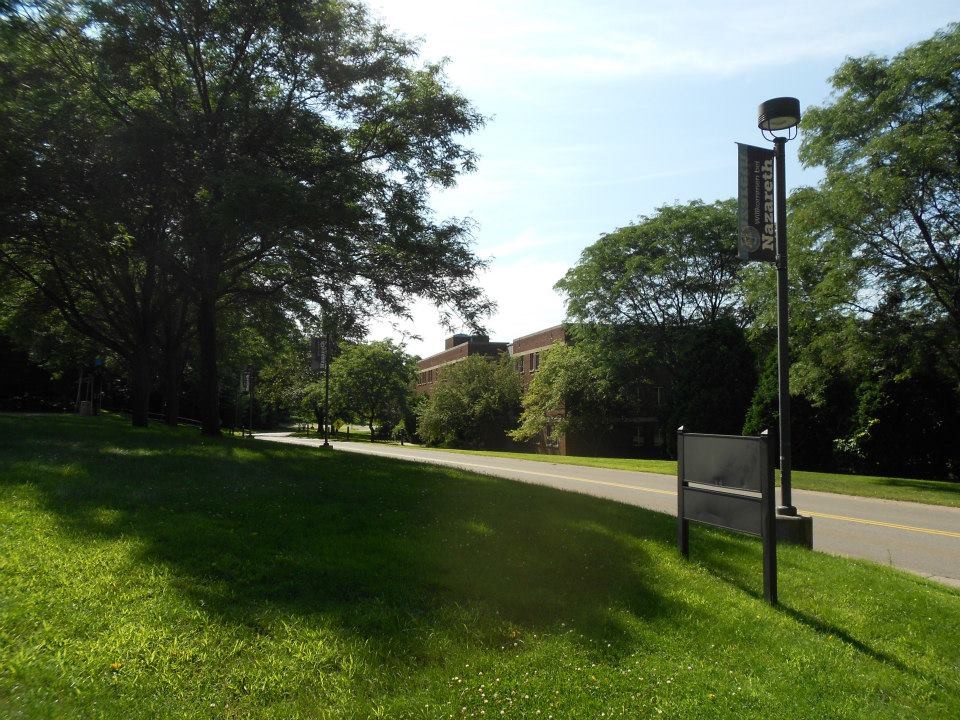Studying at NAZ
Hello all!
In the following post I will talk about how studying English actually looks like at NAZ. The system and the construction of the whole 3 week language course kept us busy, but after it ended we all could go home with stronger skills. On the second day at NAZ everyone attended an assessment exam, furthermore, we were divided into groups: beginner 1, 2, advanced 1, 2. The assessment test required writing, comprehension and speaking skills. Each group was formed by 10-12 people, having the optimal size for good work. All the teachers had strong personalities, were great professionals full of kindness, care and humour. Besides the ‘rigurous’ study, in the afternoon our teachers invited us at their homes, organized trips for us, a group of students spent a great afternoon by their teacher’s home baking cheesecake, so I can honestly say that our relation with the teachers was not only a professional one, but much deeper than that. Even nowadays if I have a problem or I would just prefer to share something with my teacher, I know I could rely on her, and that’s awesome.

What I enjoyed most at NAZ was that every class was different and each lesson was good for strengthening different skills. The classes were interactive. Don’t think about boring grammar lessons, but more about team-work, projects, presentations, improvising, reasoning, singing, and by all these getting closer to each other’s cultural and personal characteristics. We had discussions about our countries, families, goals, about society in general, about politics, global warming, racism and traditions for hours long. Not only as language speakers, but also as philosophers we did progress. The conversations we had enlarged our perspectives and enhanced thinking. I did not often share my thoughts and opinions about life as sincerely as in these circumstances. However, Nazareth College was the perfect environment for listening to others and building something wonderful together.
The final assessment constituted a project: a presentation and a written work about any issue from our countries. Air pollution in China, the condition of Hungarian workers in London, Comparing Hungarian health care with the EU standards, Education in Nepal, Politics in Belgium, The Peruvian social media, Mexican migration and so on. My favourite lessons were those in which we’ve learned locutions and idioms, but I found this final project one that included every kind of competence we’ve been working on in the past 3 weeks.
After the graduation ceremony we received a diploma, but we all know that the knowledge, the thoughts, the talks and the relationships between each other made us richer, not the paper.

One bonus information (concerning only my group and my teacher). Our teacher, Patricia, was so circumspect and kind with us, that she asked us which study field are we interested about, and tried to organize study trips for us. She called her aquintances, friends and relatives for help, and she managed somehow to take us at places we're interested about. For example the Belgian Psychology student got the opportunity to visit a psychology ambulatorium, and me and my colleague from the university, Anna, had the chance to visit a physical therapy centre, because both of us are studying Health Sciences. This gift from our teacher was priceless, and I can’t say anything than that Patricia, our teacher, was the best!
If you’re a Physical Therapy student, you’ll find interesting what I’m about to write further. Studying Physical Therapy in the US lasts 6 years, more than in any other European university. The course is very good, the only disadvantage is that studying costs a lot of money. However with the help of student-loans nothing is impossible. Rochester Strong Memorial Hospital was our host place for two days, more accurately its ambulant sector. The first difference between the competences of American and European therapists was stitch removal. In Hungary that’s the physician’s competence, but in the US the physical therapist can easily handle that. The next one was about the active movement therapy. In Hungary we’re used to describe and show our patients the excercises we want from them, but here this wasn’t so important, because there’s a fitness machine for each kind of excersise, and patients know what to do, how many repetitions to do, because the use of exercise machines is evident. The classical gymnastic we use to learn about at the uni here is replaced by gym machines and devices which result in more precise and effective movements. Anyway, I'm glad that both our theoretical and practical knowledge was strong enough to be capable to discuss about different cases and methods with the therapists. And everyone was so friendly and inclusive with us. Thanks again, Strong Memorial Hospital physical therapy unit!
Next post will be about entertainment at NAZ summer school and about friends from all over the world.
Thanks for reading. Dóra.
Photo gallery
Content available in other languages
- Español: Estudiar en el Nazareth College
Want to have your own Erasmus blog?
If you are experiencing living abroad, you're an avid traveller or want to promote the city where you live... create your own blog and share your adventures!
I want to create my Erasmus blog! →





















Comments (0 comments)